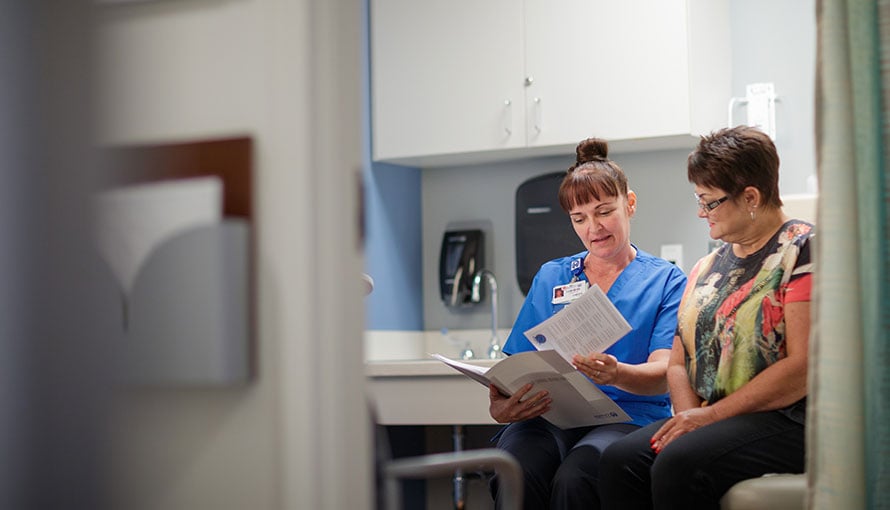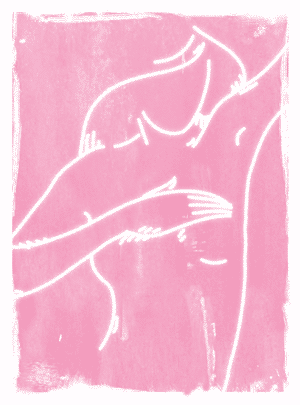Breast Cancer Signs and Symptoms
Breast cancer does not always cause noticeable symptoms in its earliest stages. However, the widespread use of routine screening tests has greatly increased the likelihood of early detection. For instance, self-screening can identify tumors that are large enough to be felt, or a low-dose X-ray breast examination (mammogram) may even reveal a tumor long before it grows large enough to be seen or felt. Because there are generally more treatment options available for early-stage breast cancer, early detection is key to achieving the best possible outcome and quality of life.
Although mammograms are highly effective, they do not detect every incidence of cancer. Therefore, it is important for everyone to learn about breast cancer symptoms and to promptly see a physician if you notice anything unusual about your breasts or overall health.
Early warning signs and early symptoms of breast cancer
The most common early symptom of breast cancer is a new lump in the breast. Cancerous lumps are usually painless, hard and irregularly shaped, but they can also be tender, soft and rounded.
Keep in mind that breast changes are common, and the majority are not caused by cancer. For instance, many women experience changes in their breasts before or during their menstrual periods, during pregnancy, as they approach menopause, while using hormone therapy and after menopause. Additionally, normal breast tissue may feel lumpy and many breast lumps are benign (noncancerous).
The Right Diagnosis. Right Away.
If you've received an abnormal test result that could indicate breast cancer, request an appointment with our Breast Oncology team today. Moffitt's diagnostic experts will perform the tests needed to diagnose or rule out cancer so you can know for sure.
Moffitt has the highest quality imaging technology and uses the least invasive testing procedures to give you accurate results.
Common breast cancer signs and symptoms
Some of the most common symptoms associated with breast cancer include:
- A lump or thickening in the breast or underarm region
- Swelling of all or part of the breast
- An unexplained change in the size or shape of one or both breasts
- A recent onset of breast asymmetry (one breast has a different size, shape or position than the other)
- A newly inverted nipple
- Nipple discharge (other than breast milk)
- Unusual nipple tenderness
- Dimpling or puckering on the surface of the breast
- Peeling, crusting, scaling or flaking of the breast skin or the pigmented area surrounding the nipple (the areola)
- Redness, warmth, thickness or pitting of the breast skin (similar to an orange peel)
- Itching or skin irritation on one or both breasts
- Breast pain
- Swollen lymph nodes under the arms or near the collar bones
The presence of one or more breast cancer symptoms does not conclusively indicate cancer, and it’s impossible to know for sure whether a breast lump is benign or malignant (cancerous) without a professional medical evaluation. If you discover a lump or another change in one or both of your breasts—even if your most recent mammogram produced a normal result—you should make an appointment with a physician for an evaluation as soon as possible.

What does breast cancer feel like?
You may not experience any symptoms at all with breast cancer. But again, the most common symptom is a lump in the breast, which can feel different depending on the type of breast cancer and the size of the tumor. You might also feel pain in your breasts, nipple tenderness, and unusual discharge from your nipple.
What does breast cancer look like?
Breast cancer doesn’t always cause visible symptoms, but you may see some of the changes listed above, such as newly asymmetrical breasts, a newly inverted nipple, dimpled or pitted skin, redness, peeling, crusting and so forth.
Advanced breast cancer signs and symptoms
When breast cancer metastasizes (spreads to other parts of the body) it still might not cause any noticeable symptoms. However, some common signs and symptoms of advanced breast cancer include:
- Bone pain or fractures if the cancer has spread to the bones or spinal cord
- Headaches or dizziness if the cancer has spread to the brain
- Chest pain, coughing, fatigue or shortness of breath if the cancer has spread to the lungs
- Jaundice, nausea, fatigue or swelling of the hands and feet if the cancer has spread to the liver
- Pain, memory loss, headache, vision problems, seizures or movement problems if the cancer has spread to the central nervous system
Common breast cancer signs and symptoms FAQs
For more information about the signs and symptoms of breast cancer, we invite you to read through these FAQs:
- Three breast cancer symptoms not to ignore
- What are the most common types of breast cancer?
- What does a breast cancer lump feel like?
- What should I expect from my first mammogram?
- How often should I receive a breast cancer screening?
- What does an inflammatory breast cancer rash look like?
- How to do a self breast exam
- What are the early signs of inflammatory breast cancer?
- What are the signs that breast cancer has spread?
How Moffitt Cancer Center approaches breast cancer
The Don & Erika Wallace Comprehensive Breast Program at Moffitt Cancer Center takes a collaborative, individualized approach to breast cancer treatment. We are proud to be the only Florida-based National Cancer Institute-designated Comprehensive Cancer Center. This means that in one convenient location, you can access the region’s best care, treatment and support. When you turn to Moffitt for breast cancer treatment, your case will be handled by a multidisciplinary team that includes:
- Fellowship-trained surgeons
- Fellowship-trained radiologists
- Medical oncologists
- Radiation oncologists
- Pathologists
- Plastic surgeons and breast reconstruction experts
- Social workers
- Genetic testing and counseling specialists
- Fertility preservation specialists
Additionally, our tumor board meets weekly to discuss the individualized treatment plan for each patient. We also have a robust clinical trials program that allows our patients to access cutting-edge care that isn’t available elsewhere. Our priorities are to provide the best possible outcomes for our patients while preserving their quality of life.
To learn more about our breast cancer services or to set up an appointment to evaluate a breast lump or other symptom of breast cancer, please call 1-888-663-3488 or submit a new patient registration form online.
References
Metastatic Breast Cancer: Stage 4 Symptoms, Treatment, Survival
Breast Cancer Signs and Symptoms | Most Common Symptoms
Signs and Symptoms of Breast Cancer
Cancer Treatment Centers of America – What Are the Signs and Symptoms of Breast Cancer?
National Cancer Institute – Understanding Breast Changes: A Health Guide for Women
Centers for Disease Control and Prevention – How Is Breast Cancer Diagnosed?

